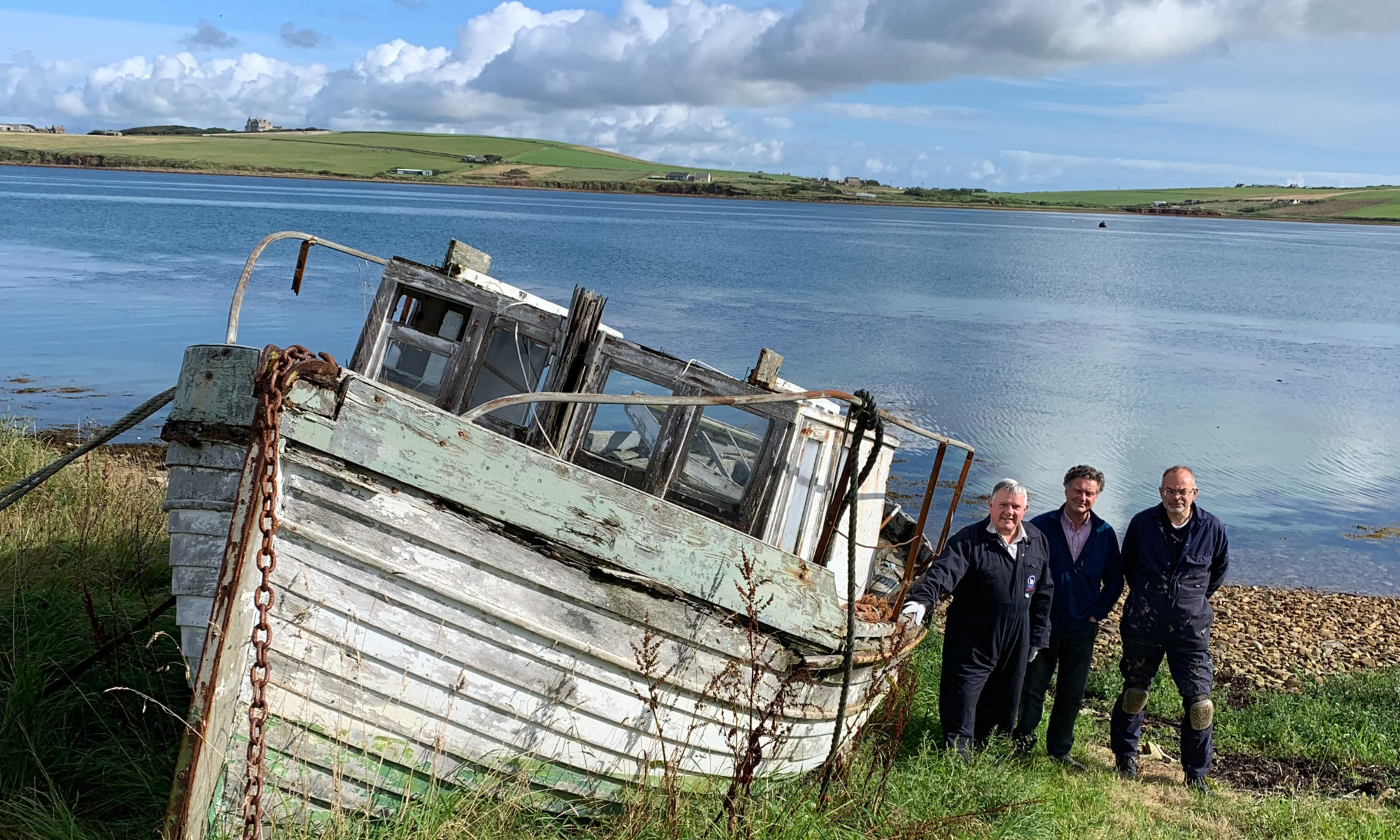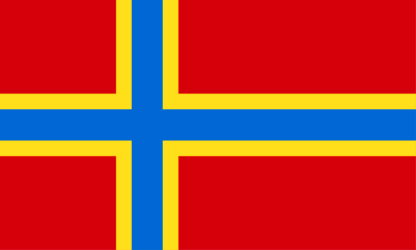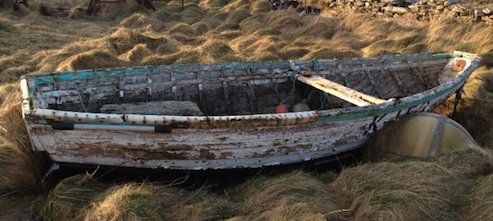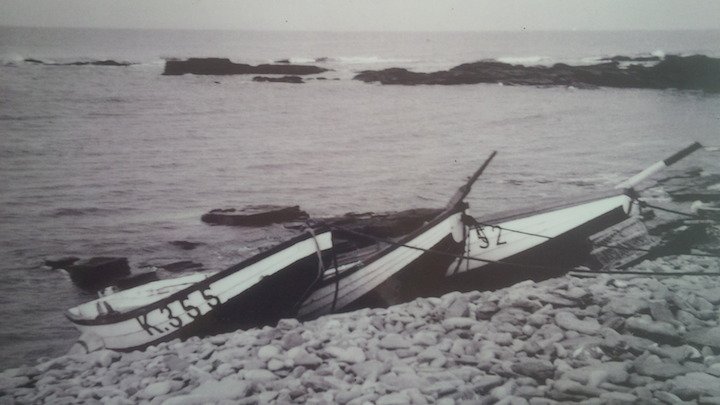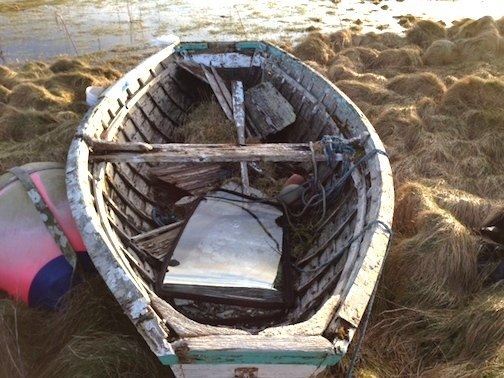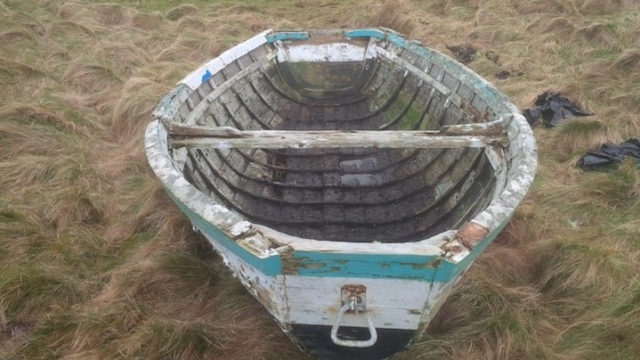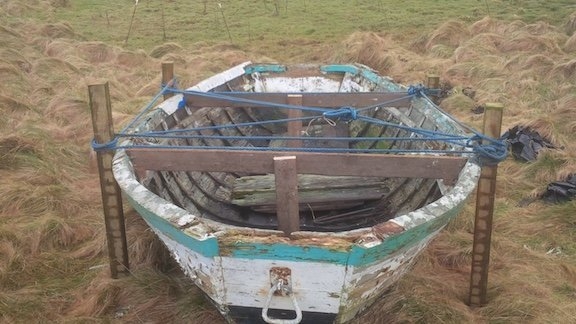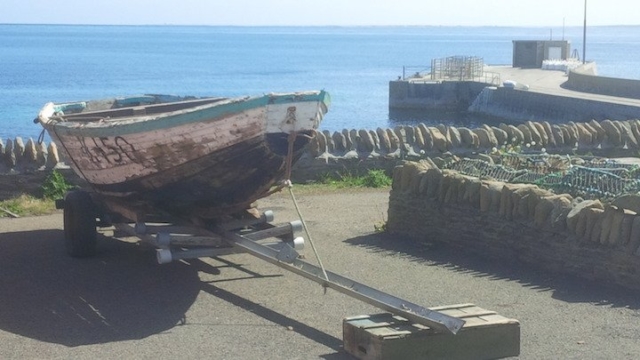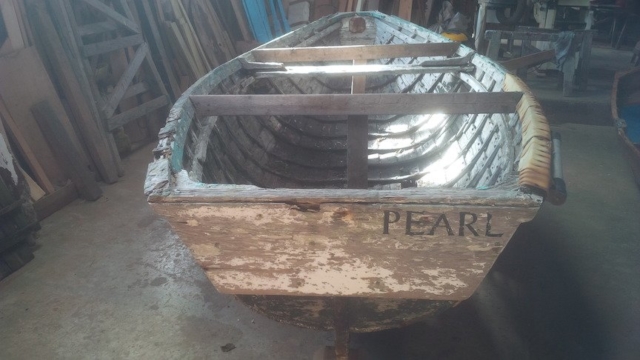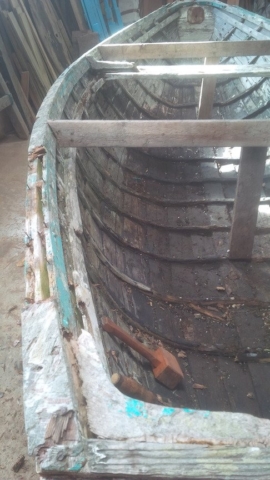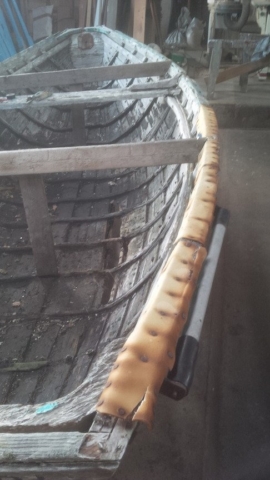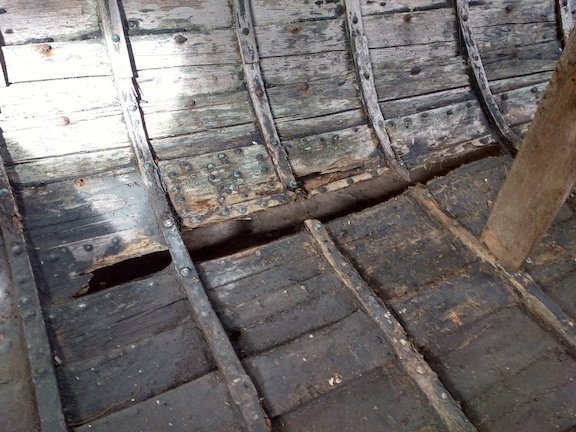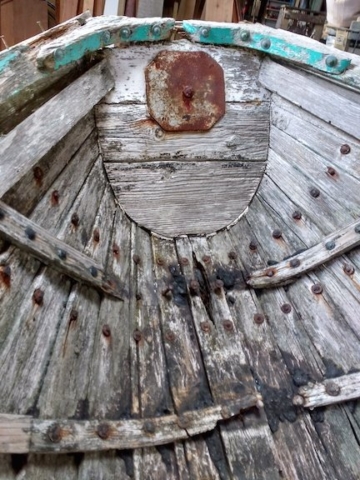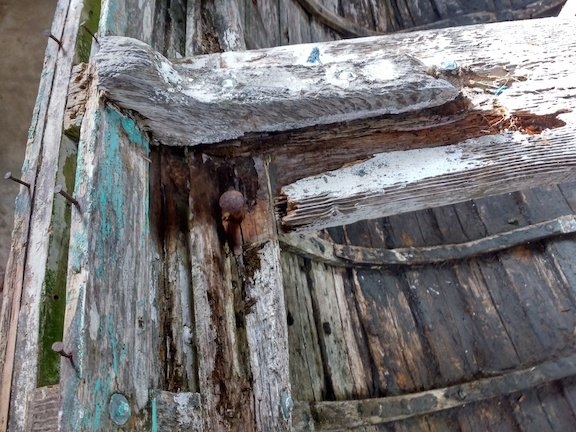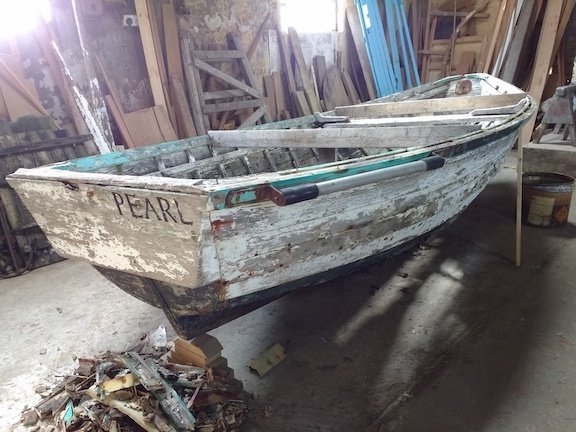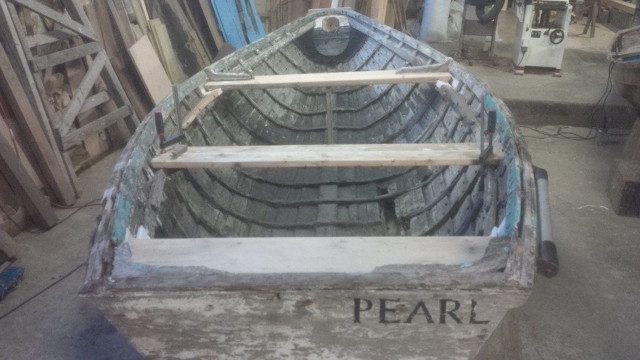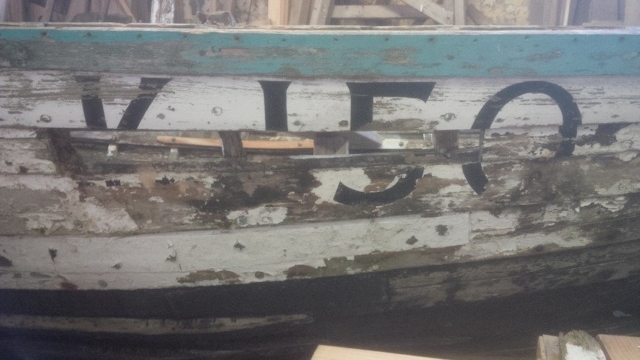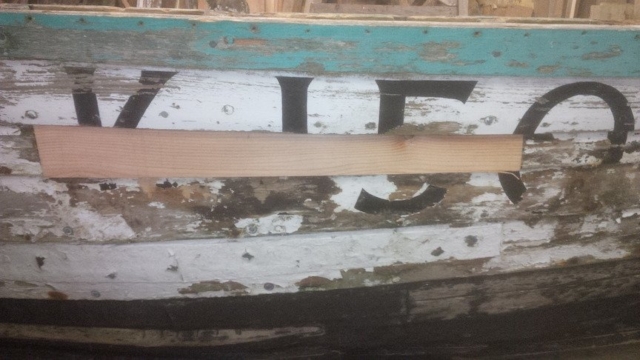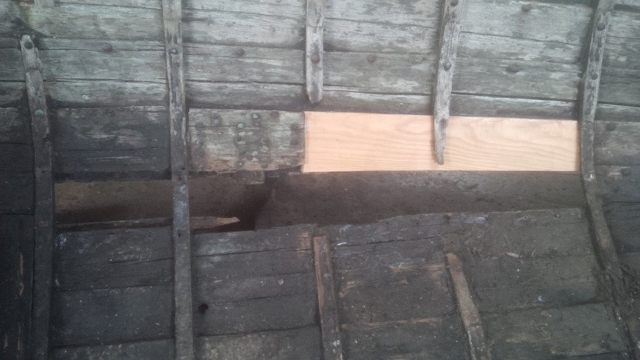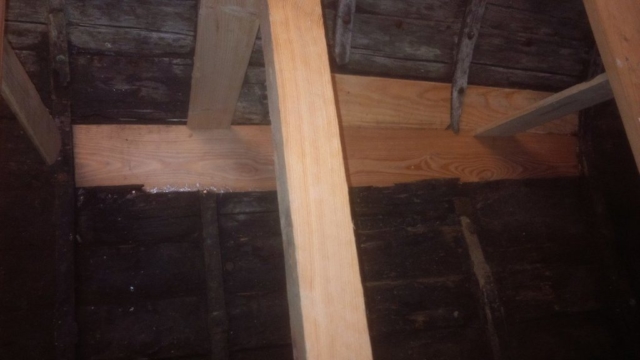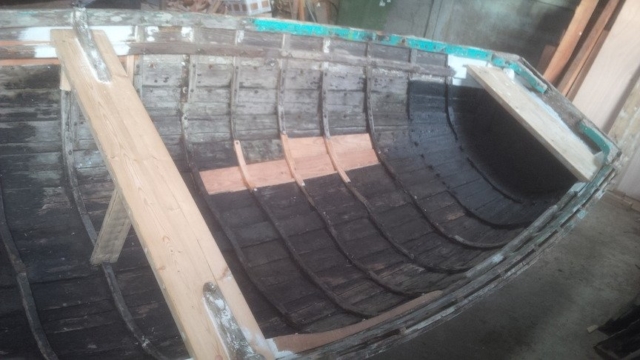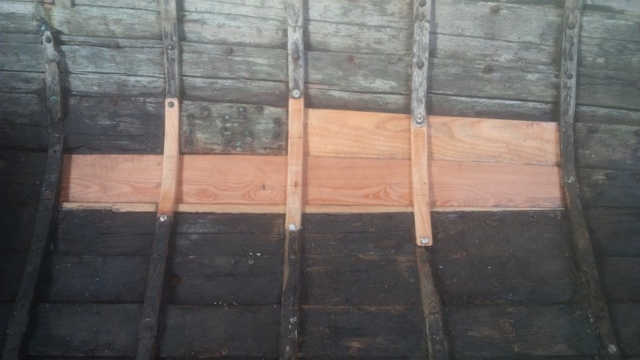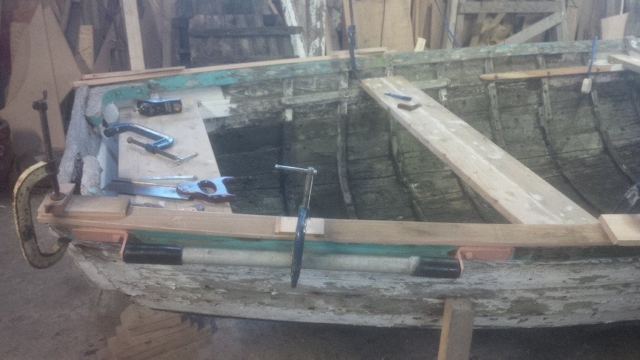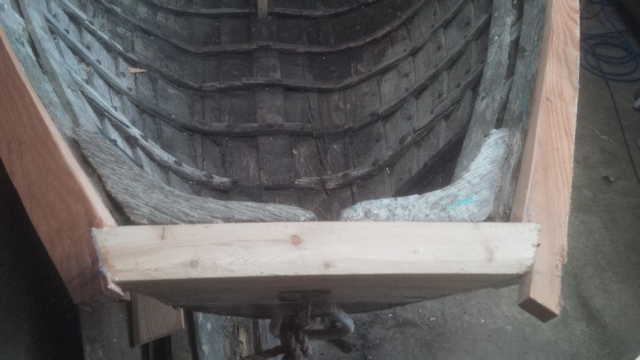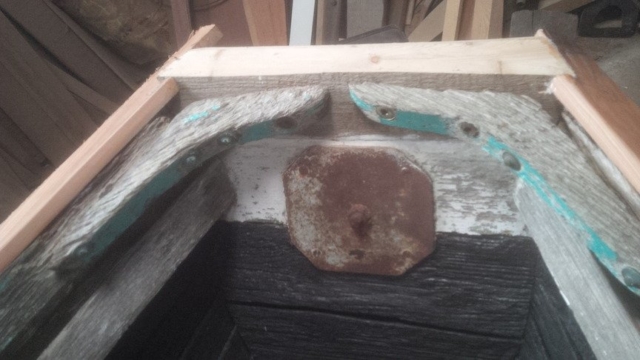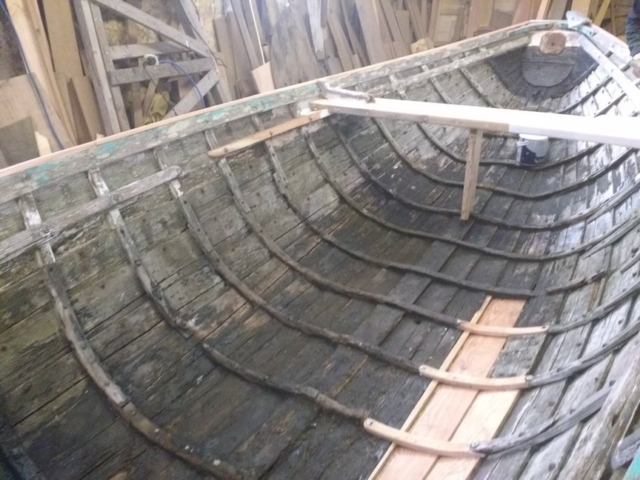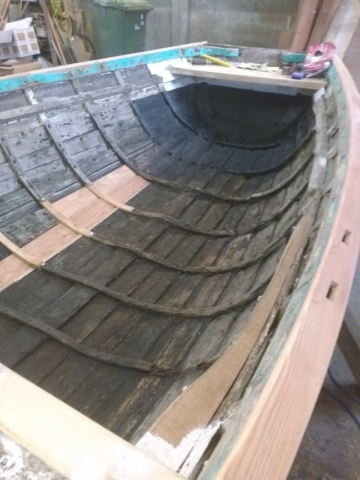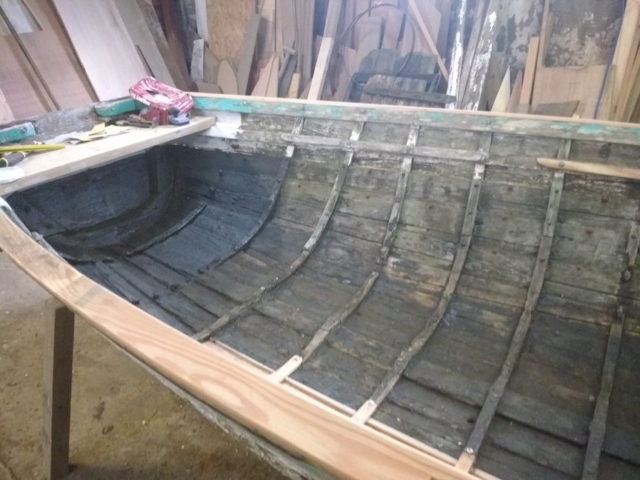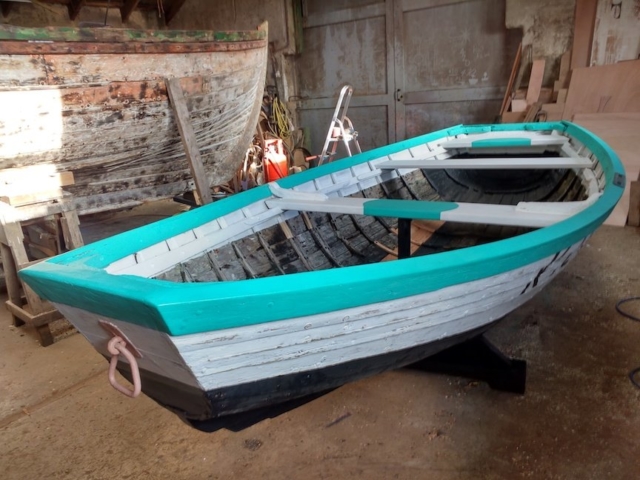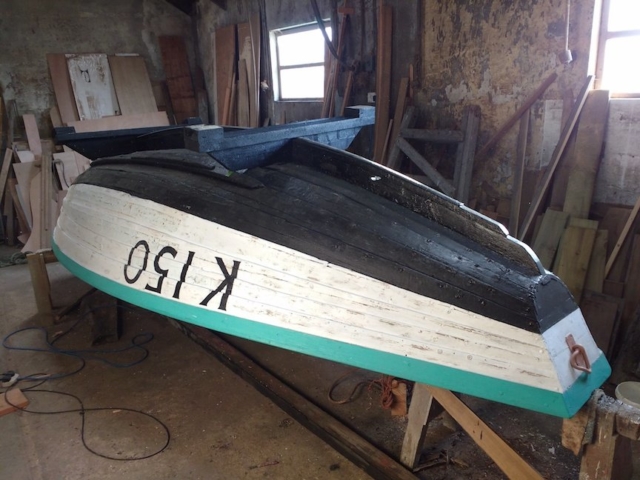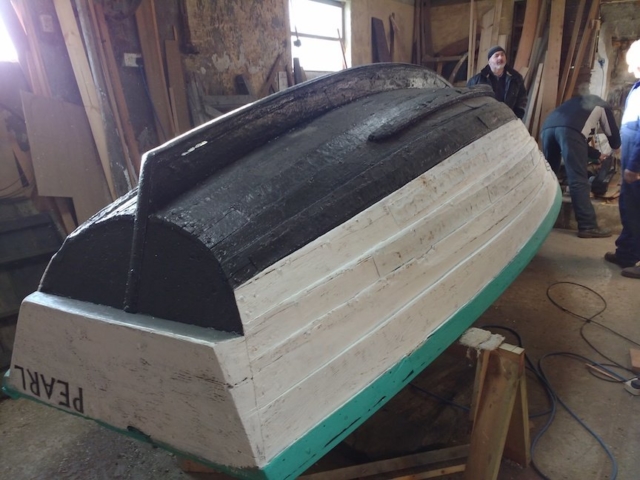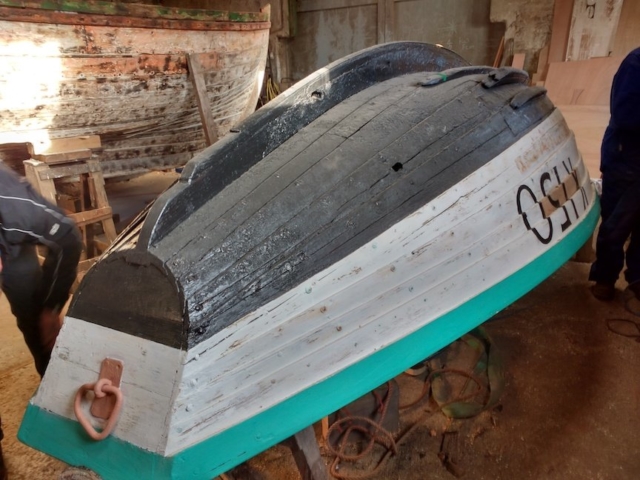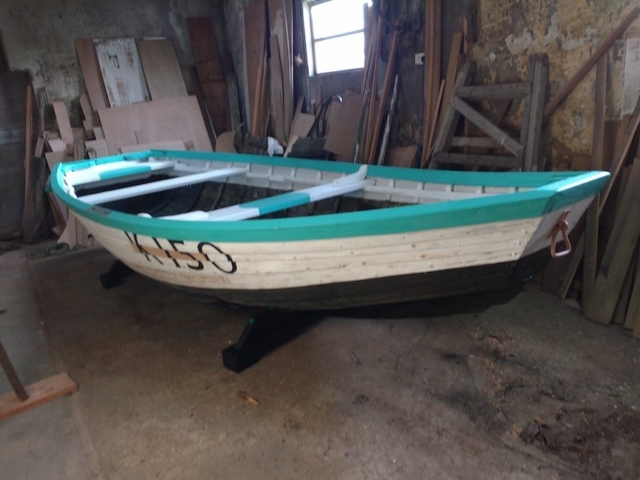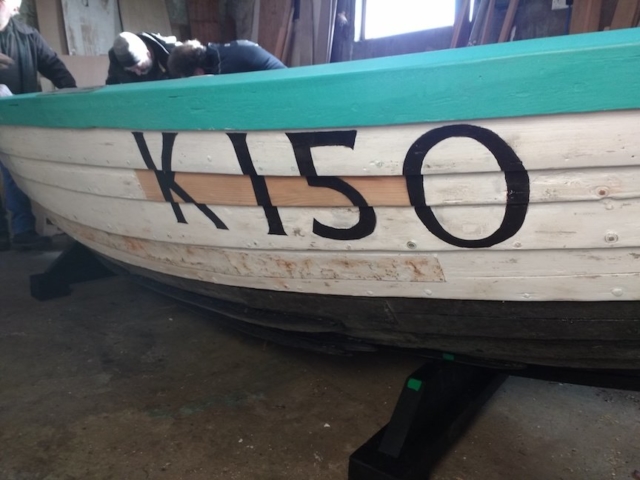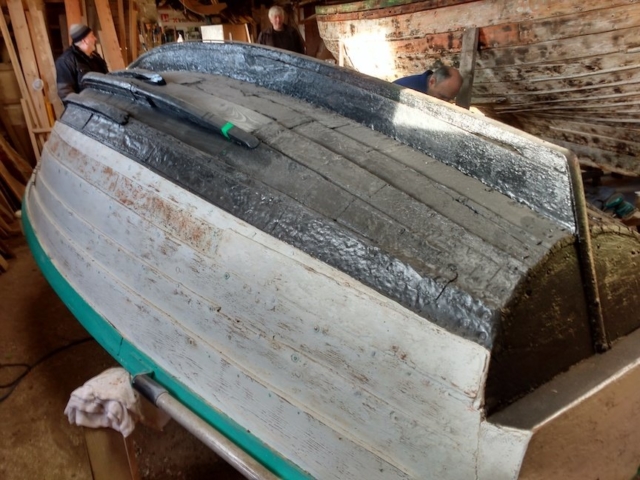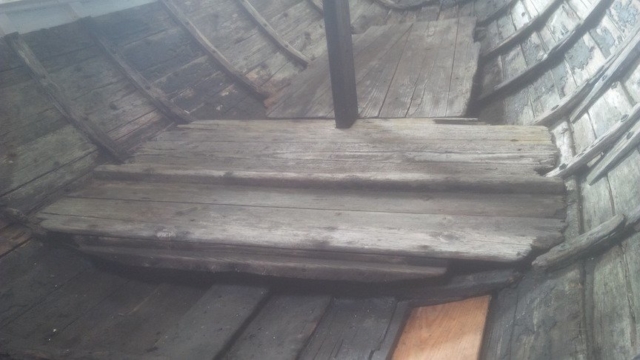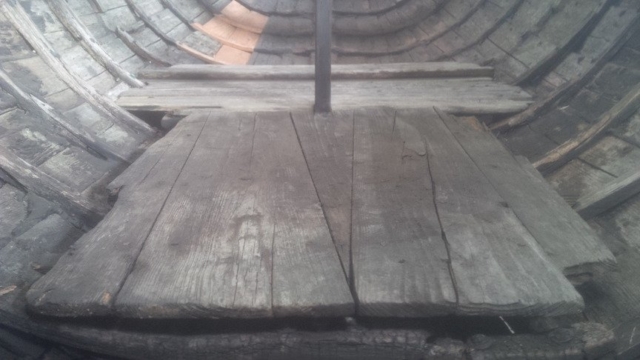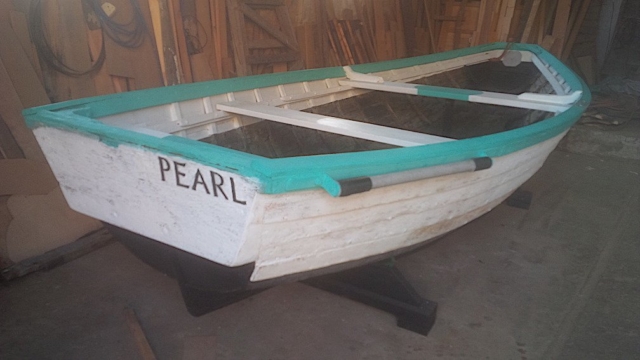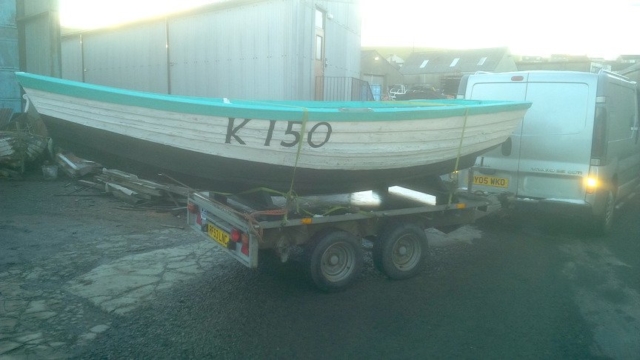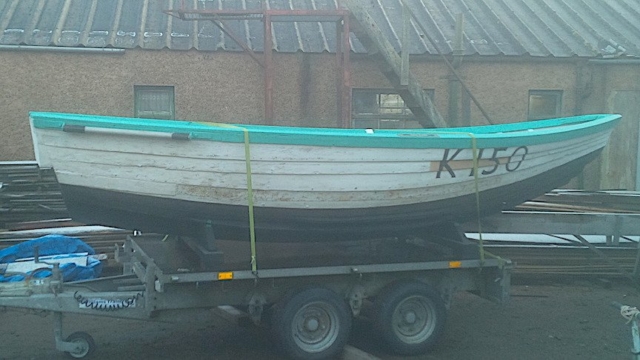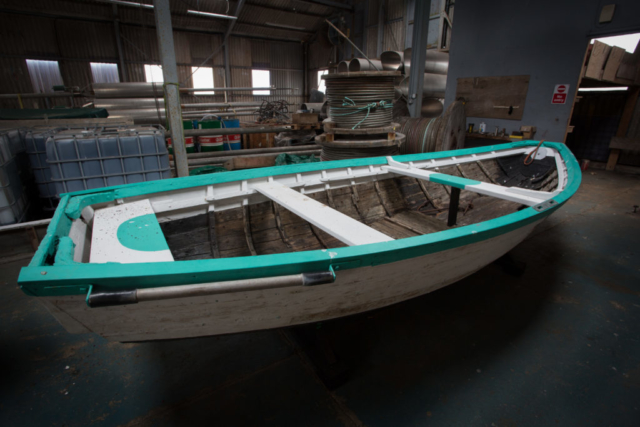An early North Ronaldsay Praam (or Pram) donated to OHBS by John Tulloch, Purtabreck, North Ronaldsay.
Built in 1926 at Milldam, North Ronaldsay by Hughie Muir & John Cutt, she has length 15.4ft, beam 6ft, and depth 2.3ft.
A praam dinghy is a boat with keel but no stem post. She has a broad stern transom and a ‘U’ shaped fore transom on a significantly curved keel. It was a chance encounter with a Norwegian ship carrying aboard a small boat with this unusual shape which led Hughie Muir of Sholtisquoy, to build this design with John Cutt of Gerbo, both in North Ronaldsay. Very few praams remain in existence.
Pearl was designed for inshore fishing, with lines and creel fishing with two crew amongst the skerries (rocky outcrops) around North Ronaldsay. The curved keel, allowing for a spin around turn on her own length, was the key design feature allowing safe access to these restricted inshore areas. North Ronaldsay beaches are steep and at times of the year even steeper due to tide driven kelp tangles forming high water mounds. The hull shape allowed two men to drag her up the beach despite length of 15 feet and 4 inches, beam 6 feet and depth 2 feet and 3 inches.
First registered for fishing on 10.7.1940 (K49) by John William Tulloch, Ancum, North Ronaldsay for fishing with lines and creels. She had a lug sail and oars, but in 1948 an auxiliary outboard motor was added. This registration was cancelled on 11.11.1969.
She was then re-registered for fishing on 4.5.1971 (K150) by John William Tulloch, Purtabreck, North Ronaldsay (no relation to previous owner). Interestingly, the length was now recorded as length 15.7ft, beam 6ft and depth 2ft. This registration was continued until 1980, and finally closed in 1988.
The boat was dried out early 2016 and then transferred to Ian Richardson’s boatyard in Stromness where the volunteer work to tidy her up, remove rotten wood and undertake the conservation management plan got underway.
By early 2017 all rotten or missing wood was replaced, the integrity of her structure was now fully conserved. The principle used was to ‘do as little as possible, but as much as is necessary’ to stabilise her structure and finish her to museum presentation standard. Much of this current work was carried out by our enthusiastic (and skilled) secretary, Rod Daniel, with much helpful advice from boat builder Ian Richardson.
